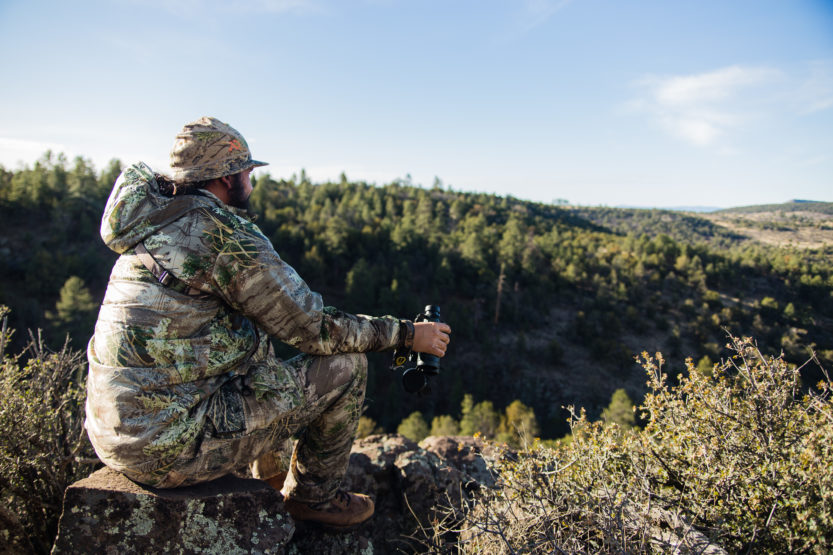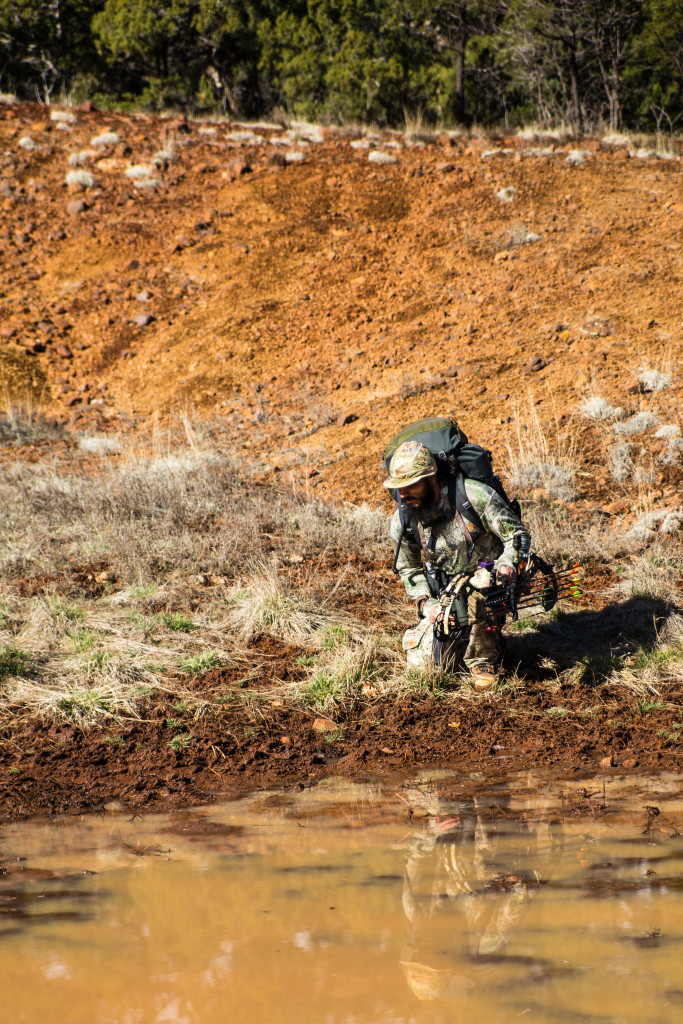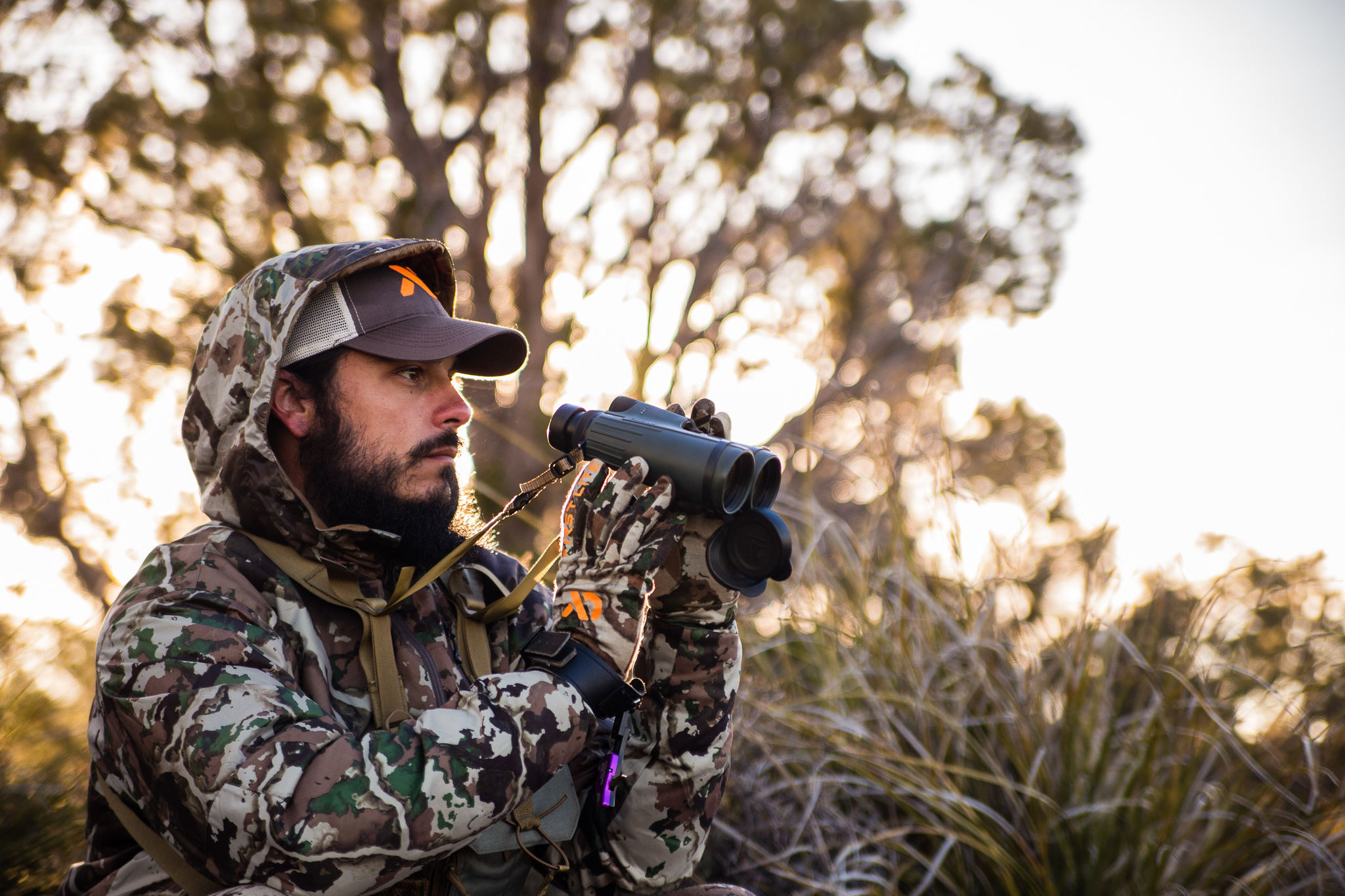

Taking on a new area before the season starts can be extremely overwhelming. Even if where you are scouting is somewhat familiar to you, it can still be tough. Things change from year to year, whether it be availability of food or added hunting pressure. Over the last few years though, I have come up with a basic system that has seemed to work pretty good when it comes to narrowing down specific areas to check out. Now, keep in mind that all of these suggestions are based on my experience hunting in Arizona. Hopefully, you can apply them to your neck of the woods though when it comes time to scout.
The first thing that I look for in an area that I am planning to hunt is some sort of water source, be it a tank or a spring, it doesn’t matter. Often times, especially around water tanks, the ground will be muddy. Mud means tracks in my mind and good tracks at that. This is a super quick and efficient way to get a basic idea of what is or isn’t roaming around the area that you are in. The mud trick is extremely important when you are trying to scout for bears or other animals with padded feet. Their tracks stick out like a sore thumb in the mud. Good luck finding them on the hard ground though. Try and note where the majority of the tracks are on the water source and where they are coming from. You should be able to make out some sort of trail or trails going to and from the water. All animals need water to stay alive, some more than others.

The next thing that I will note while out walking about is food. Depending on what species and time of year I will be hunting will depend on what food I have my eyes out for. If you don’t know what food your quarry likes, GET TO KNOW IT. There is plenty of biological information on the internet about our game animals. If you wanted to see people, you could just go stand over by a grocery store and you will see people. Everyone needs food and the same remains for critters. Find those “grocery stores” in the mountains. They are there, you just have to look. IN GENERAL most food is going to be located on a south facing slope. Yes, food can and will be located on other slopes, but it always seems to be a sure bet that you can find meals for what you are hunting on the southern slopes.
If you don’t have a topographic map of where you want to hunt, do yourself a favor and get one. These are super handy tools and with them, you can eliminate a lot of areas to check out. Right off of the bat, I will note east and west running canyons. My reasoning for that is the simple theory of animals will GENERALLY feed on south facing slopes and bed on north facing slopes, because the north facing side will generally have more shade. If a canyon runs east and west, one side is north facing and the other side is south facing.
The next thing I will keep my eyes out for are saddles. If you don’t know what a saddle is, they are exactly what they sound like. A horse saddle is basically a big wide U. When you apply that to the mountains, they are basically dips or low points in between two areas of higher elevation. These “dips” are EXCELLENT travel corridors for animals. Most animals will choose the path of least resistance when moving from point A to point B. Saddles are one of them.
Lastly, I will look for high vantage points where I might be able to watch all of the above mentioned. Staying back and using your optics to observe animals is the best way to get to know them and their habits. You can watch a deer be a deer, not be a scared animal running away from you. On my map I will actually plan out a route to take that will hit all of my noted vantage points and allow me to observe what we have talked about so far. Make a day of it, spending an hour or two at each spot just watching. You might be surprised what you see.
Google Earth is an absolute game changer with scouting/hunting. It is almost like you can really be in the area you want to scout or hunt right from your living room. This awesome tool will actually allow you to go to things like high vantage points and place yourself there at ground level. By doing so, you can get a REALLY good idea of what you are going to be able to see from that particular location. Another nifty feature is dropping pins or markers on certain spots on your Google Earth map. Lets say that you have a marker for camp and a marker for your glassing spot. You can plan a route from your camp to your glassing spot and it will tell you how far of a walk it is to get there using the route that you have picked. I love this feature. Knowing how far away my glassing spot is gives me a good idea of how early I need to leave camp to arrive there on time. I am only just scratching the surface with Google Earth, but I am telling you, if you haven’t tried it, GET ON IT.
It takes years and years to accumulate knowledge in a particular area that you want to hunt and what I have told you today only accounts for the beginning. The real tool for scouting is time. Time spent in the woods is the ultimate teacher. In the last 3 years I have been in and out of a certain spot here in AZ and I STILL am finding new things. For me, that is a very humbling feeling.


Copyright 2019 Dialed In Hunter
Design by NXNW.